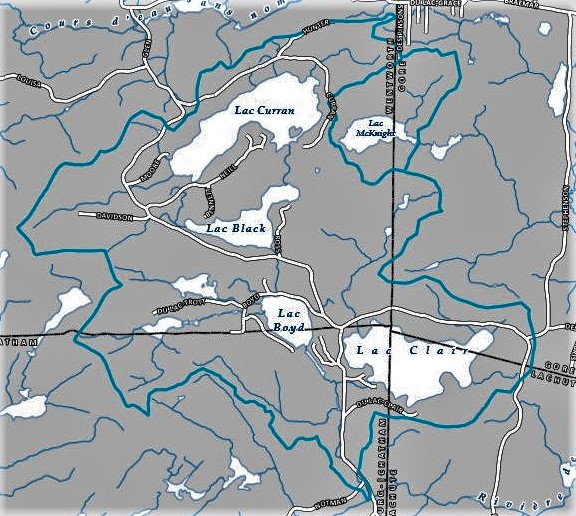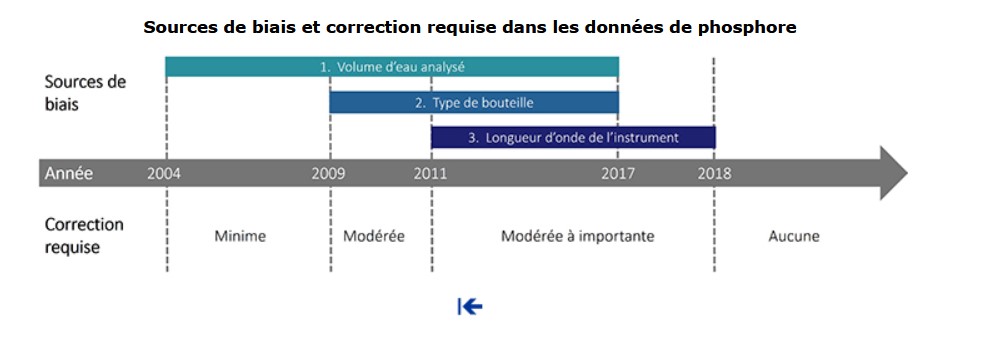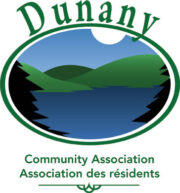The data collected last summer in our lakes show that three of them are clasified as oligotrophic, that is to say in very good condition. They are Black, Clear and Curran. However, the data from Boyd Lake raises some concerns and it has thus been classified in the oligo-mesoptrophic category, i.e. a lake that shows some signs of deterioration. We will therefore pay special attention to it during the summer of 2024.
That being said, we should not conclude that this is a critical situation. It is more of warning sign. As the saying goes, prevention is better than cure.
Let’s review the situation.
Boyd Lake is constantly receiving new water with nutrients, including phosphorus, which remains suspended in the lake and do not have time to reach and bind to the sediments at the bottom of the lake. This is the consequence of its very short renewal time which is 0.20 years, or approximately 3 months. This is extremely short renewal time compared to those of Curran Lake of 2.37 years, Black 0.41 years and Clear whose renewal time reaches 3.39 years.

In this context, it is not so surprising to observe phosphorus levels which vary greatly and are higher than in other lakes. In 2023, the phosphorus data are intriguing. On June 18, total phosphorus was 4.3 μg/litre, then on July 16 it hit 12.3 μg/litre, and finally came down at 5.6 μg/litre, on August 20. Intriguing, isn’t it?
I spoke about it with people from RSVL at the Ministry of the Environment who, like me, were somewhat puzzled. They told me that they had not found a valid reason to remove the June 16 data from the file. But they do not rule out that the sample could have been involuntarily contaminated. As I wrote earlier, these results meant that the lake went from oligotrophic to oligo-mesotrophic status even though the transparency data are those of an oligotrophic lake.

But that’s not all.
I also received the corrected phosphorus data for the years 2006 to 2017. Many of you will remember my disbelief when I wrote in the spring of 2017 : Our 2017 lake results: are they too good to be believed? Unfortunately, I was right. Look carefully at the chart! Between 2012 and 2017, phosphorus data had been dramatically underestimated. The reasons are numerous and well identified in the illustration which is posted below…
In short, it is encouraging to note that the data for 2021 and 2022 present a very acceptable phosphorus level, that of an oligotrophic lake. The data from 2023 samplings are perhaps an accident. This summer, we will resume the collection of the water samples and will see in 2025 what is happening.

I now draw your attention to the following graph which incorporates the adjusted phosphorus data from Boyd Lake. Between the years 2012 and 2017, phosphorus data was underestimated by around 50%. This is huge. The diagnosis is evident: Boyd lake being at the end of the watershed – water flowing from Curran to Black and finally to Boyd – receives a lot of nutrients. Phosphorus count in 2023 (average of 7.4 μg/litre) has been exceeded three times in recent years!

Note that the revised 2006-2017 phosphorus data from Boyd Lake is the only one currently available. Revision of the data from other lakes is work in progress.
Now, let’s see what the situation is for the other three lakes:
Black Lake
Nothing special to report for Black Lake even if its renewal time is not very long (0.41 years) – still double that of Boyd (0.21). The total phosphorus count at 4.4 μg/litre places it in the oligotrophic class. As the water is more coloured than in other lakes, transparency suffers a bit. We measured 4.3 meters last summer.
Curran Lake
Curran Lake is still in the oligotrophic class. Phosphorus is 4 μg/litre, a rate almost identical to that of the previous year, which indicates that the water is only lightly enriched by nutrients such as phosphorus. Its renewal time is 2.4 years is average for its size. Transparency remains around 5 meters. So, looking good!
Clear Lake
Data from 2023 shows that Clear Lake is in excellent health. The phosphorus level of 3.6 μg/litre is the lowest in recent history. The average transparency measurements are 6.6 meters, a decent score for a summer to forget. Note that the renewal time is by far the longest of our four lakes: 3.39 years, almost 40 months.
To view the full charts of each lake, click here.

I would like to point out that the renewal times of our lakes have recently been updated using new, much more precise topographical data generated by the Quebec government’s digital LiDAR models. I have therefore substituted the revised bathymetric maps which appear on the right side of this page.
I cannot end this article without thanking the volunteers who collect the data for you throughout the summer months: Gustavo Labbé at Black, Bonnie Swaine at Boyd, François Côté at Clear and André Therrien at Curran. Without forgetting my dear wife France who ensures their training and the proper management of the water samples.
Happy summer to all you lucky residents of the semi-autonomous Republic of Dunany!

Thanks Jacques for this well researched information on our lakes’ condition. Sorry to learn about Boyd Lake and look forward to measures taken to make it better again.
Thanks JAcques
Thank you Jacques for keeping us all informed and you dedication to Dunany and its lakes. It is most appreciated! A job well done!
Thank you Jacques for sharing this important information and analysis with us! Much appreciation to the efforts of the volunteers and France as well!
Merci Jacques! Thank you all for this very important work!
Thanks for the report Jacques. It is very reassuring to know that our lakes are healthy and receiving the attention needed to stay that way!
Jacques – Thank you for this detailed report! We are very lucky to have a team of volunteers engaged in all the aspects of monitoring our lakes!
Merci Jacques!
Thanks Jacques. You have done a great job in presenting all of this information in a way that makes it easy to digest. I realize that takes a lot of effort, and I want to acknowledge that effort and that of your team of lake monitors.
John Nolan
Thank you.